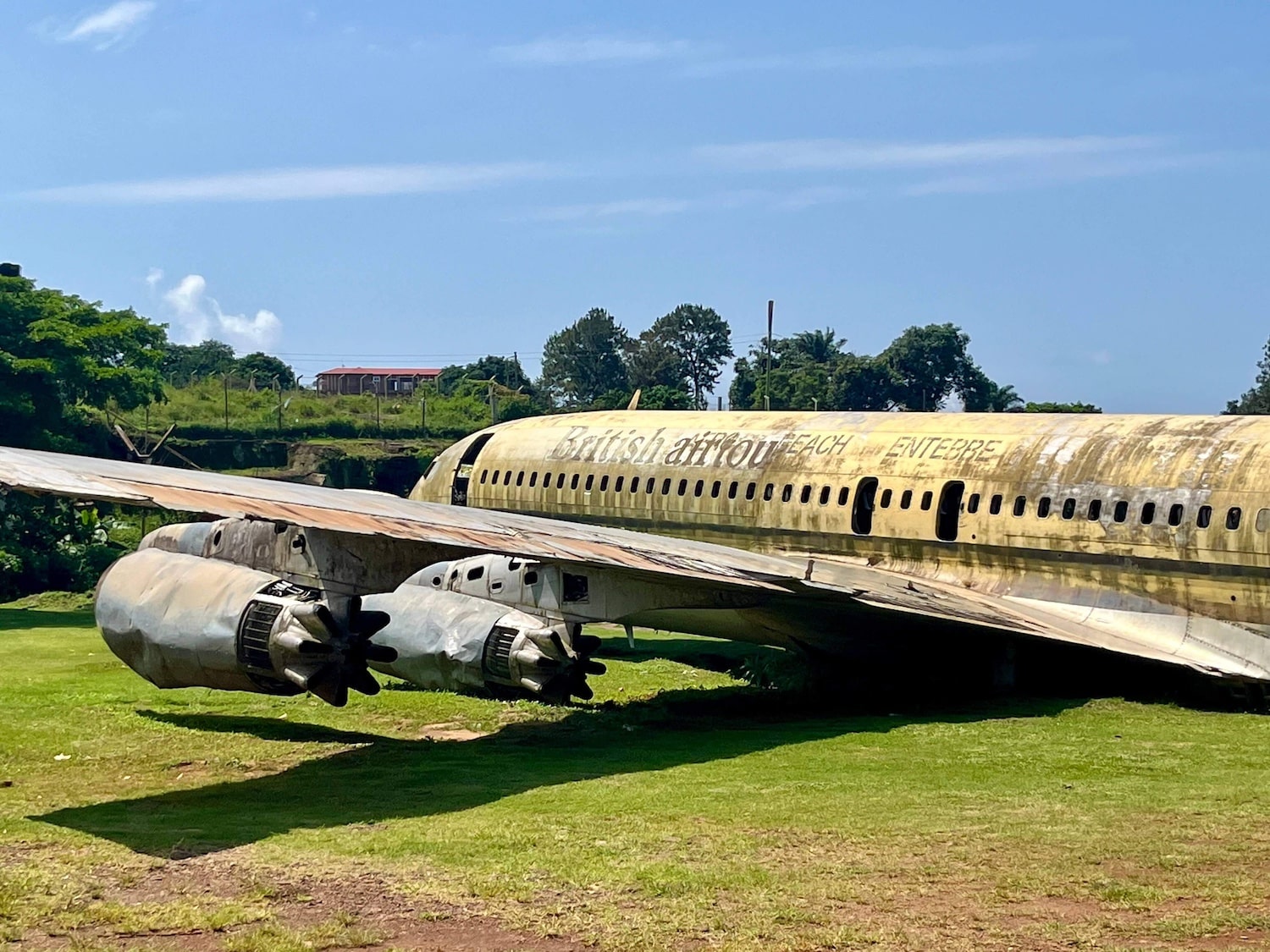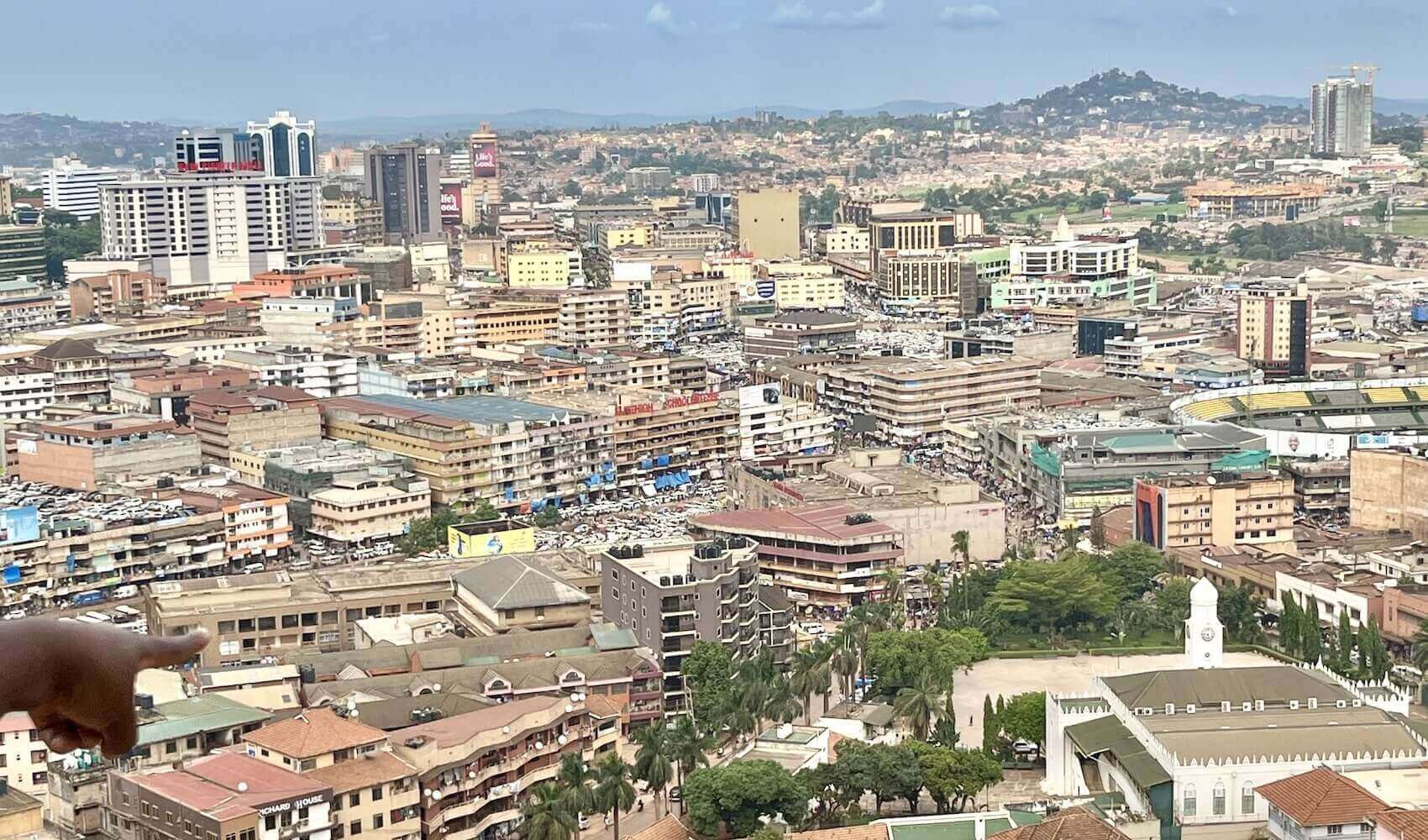
I visited Uganda in May 2024, as part of my East Africa trip with my good friend from college Allen Liu. We continued our African night bus odyssey with a 10-hour journey from Kigali (Rwanda) to Kampala (Uganda's capital). The bus was modern and we had plenty of space, but sleep was evasive. The gospel music that the driver blasted the entire journey was very beautiful at the start, but after 5 hours of hearing a choir joyously singing the same tune over and over again, I was praying for salvation. We spent a few days in Kampala with a day trip to the nearby city of Entebbe.
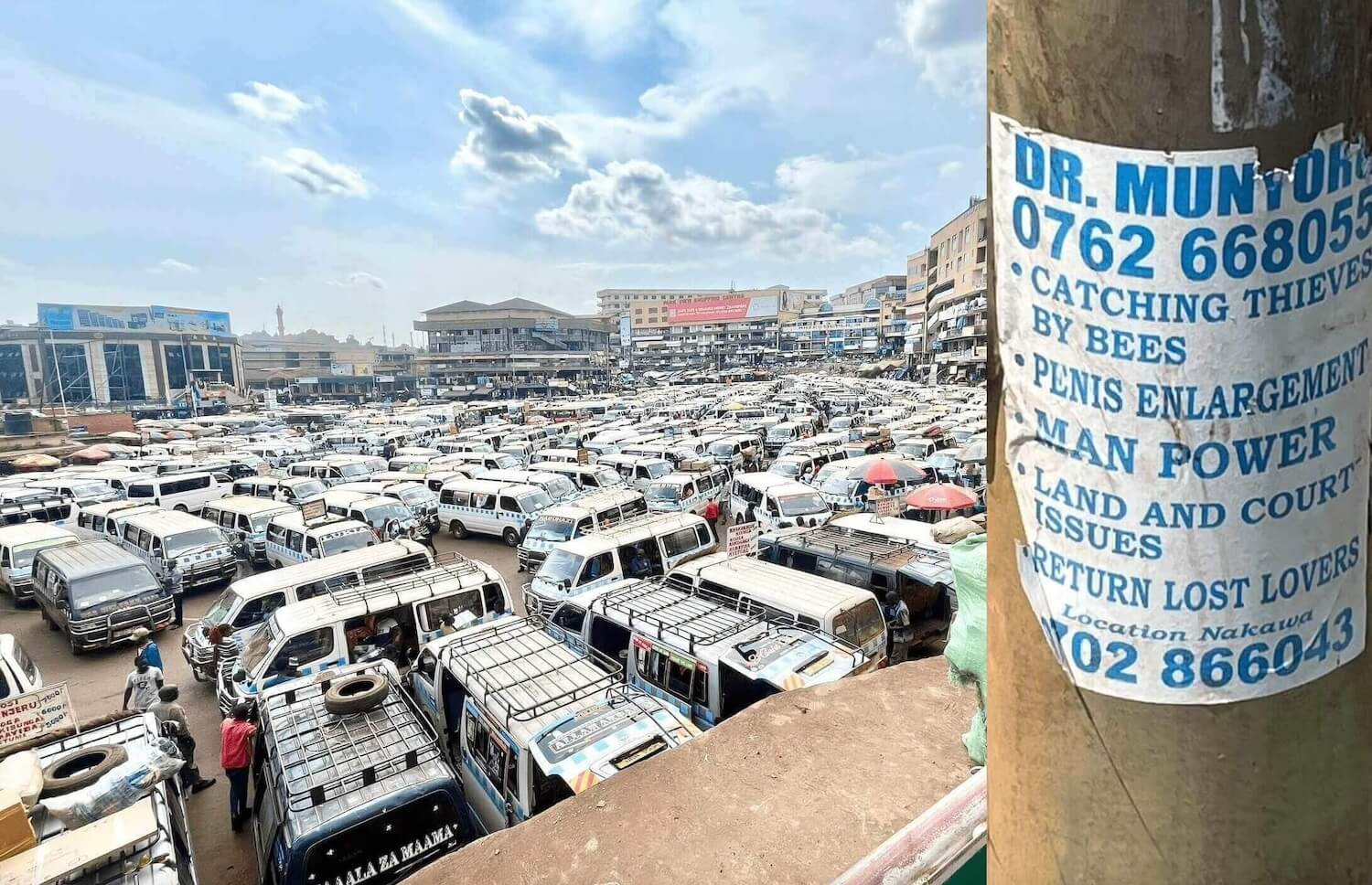
Kampala is large and very chaotic. Navigation was easy because most people spoke English and were helpful. Motorcycle taxis and cars flood the streets, and unlike in Rwanda, passengers do not seem to be required to wear helmets. The old taxi station was a massive open-air parking lot jam-packed with share taxi vans. In one part of the city, every single street pole was plastered with posters from various Ugandan “doctors” advertising their practices. I did not know that so many Ugandan doctors specialize in “catching thieves by bees” or performing "penis enlargements".

Uganda is a multi-ethnic country, and no one group makes up a majority of the population. It gained independence from the UK in 1962 to become a monarchy. In 1966, the socialist Milton Obote gained power in a coup d’etat and abolished the multiple kingdoms that existed. His corruption and violation of civil and human rights made him unpopular, and in 1971 the commander of the Ugandan military Idi Amin overthrew him. Amin set up a dictatorial regime that killed hundreds of thousands of Ugandans. In 1972, he expelled over 20,000 members of Uganda’s wealthy and influential South Asian community, which tanked the nation’s economy.

In 1978, border tensions led to the Uganda-Tanzania War. Uganda was supported by Libya and the Palestinian Liberation Organization, whereas Tanzania fought alongside the Uganda National Liberation Front rebel group. Tanzania emerged victorious in 1979. Idi Amin fled the country, and the familiar face of Milton Obote seized power once again. However, he did not manage to unite the nation for long. In 1980, Obote’s previous ally Yoweri Museveni rebelled, starting the Ugandan Bush War. The conflict lasted until 1986, when Museveni emerged victorious. Despite Uganda being a democracy on the surface, Museveni has remained in power ever since. Unlike in Rwanda, however, several Ugandans we met felt free to sternly criticize their leader. In 1993, Museveni restored the traditional kingdoms without giving them any real power.
In Kampala, we visited the Kasubi Tombs, a palace where four Bagandan kabakas (kings) are buried. The Kingdom of Buganda is a traditional kingdom that falls within Uganda’s borders. It is led by King Muwenda Mutebi II, who lacks official political power, but exercises massive influence over ethnic Bagandans, who make up 16.5% of Uganda’s population. The massive palace structures in this complex are built entirely with natural materials like wood and thatch. Our tour guide, who happened to also be a Bugandan prince, helped clear up our confusion with the terminology: the Bugandan kingdom is contained within Uganda (the country); its people are Bagandan, and speak Luganda.
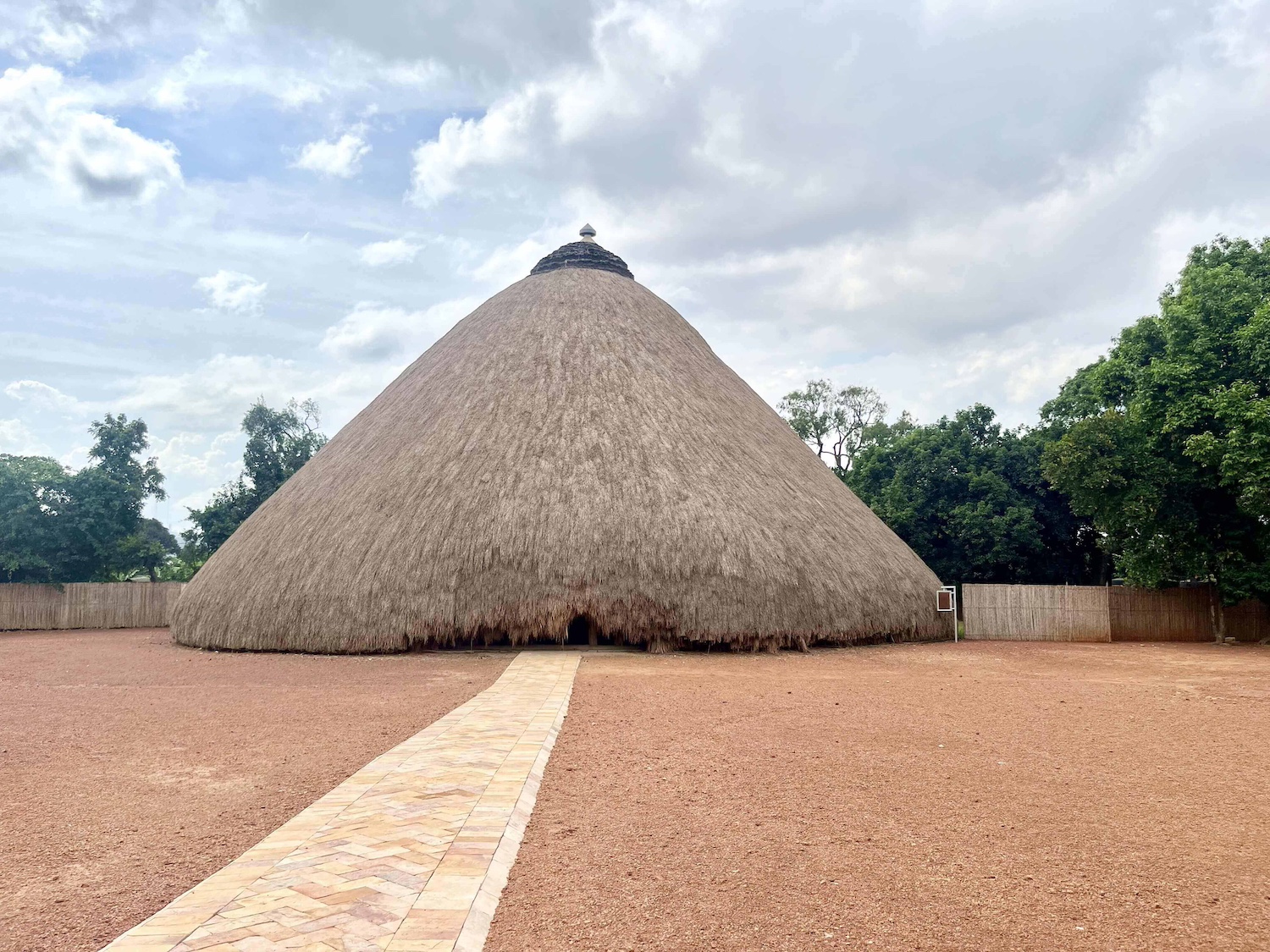
We had the good fortune of getting a tour of the Ugandan National Mosque, also known as the Gaddafi Mosque. Its construction was initiated by Idi Amin in the 1970s, but all progress halted after he was deposed. In 2001, however, Muammar Gaddafi of Libya funded it, and it was completed in 2007. A kind woman gave us a tour of the mosque’s interior and led us up the minaret, which offered a stunning view of the city.
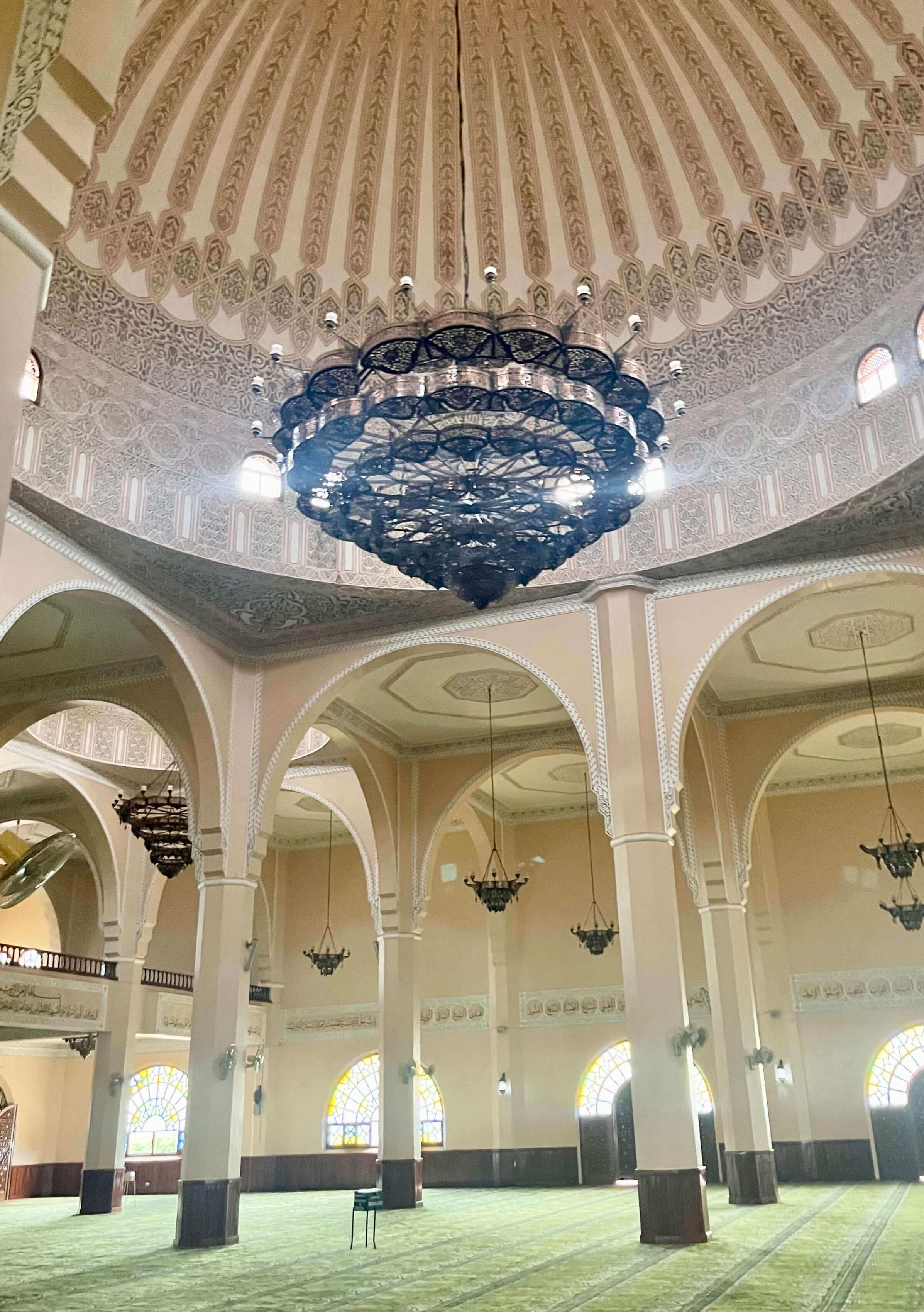
In Entebbe, we visited Aero Beach – an airplane cemetery on the shores of Lake Victoria. In 1976, two Palestinians and two Germans hijacked Air France Flight 139 that was heading from Tel Aviv to Paris. Idi Amin let them land and keep their hostages in Entebbe. The Israeli secret service, Mossad, launched Operation Thunderbolt – a daring raid in which 100 commandos stormed the compound the captives were held in, killed 45 Ugandan soldiers, and rescued 102 hostages. Idi Amin was not thrilled. Because Kenya supported Israel and allowed the Mossad force to refuel there, the Ugandan military retaliated by killing 245 Kenyans who lived in Uganda, and expelled thousands more. Surprisingly, the hijacked Air France plane was not in the park – the largest plane was a British Air Tour passenger jet.
